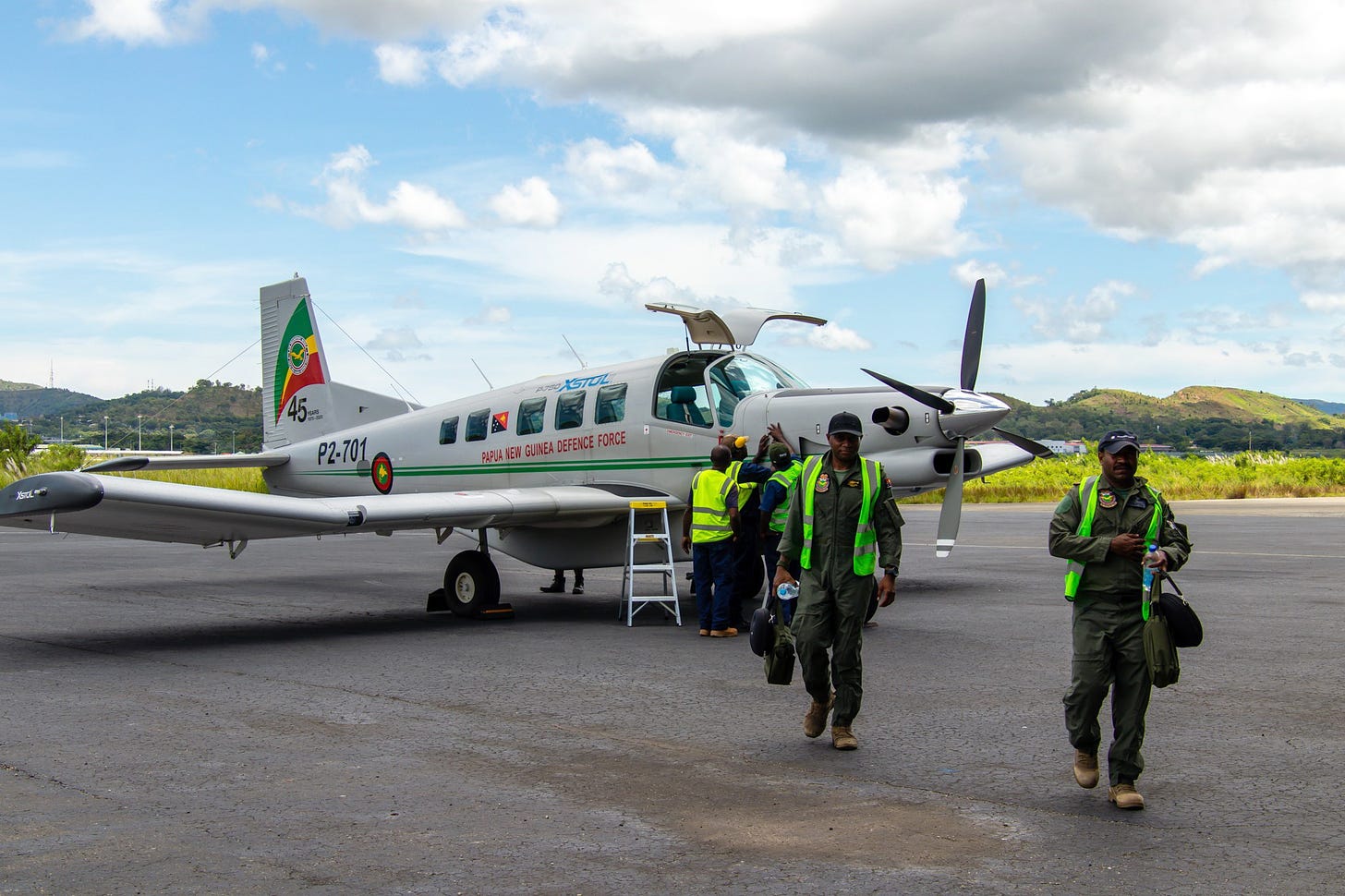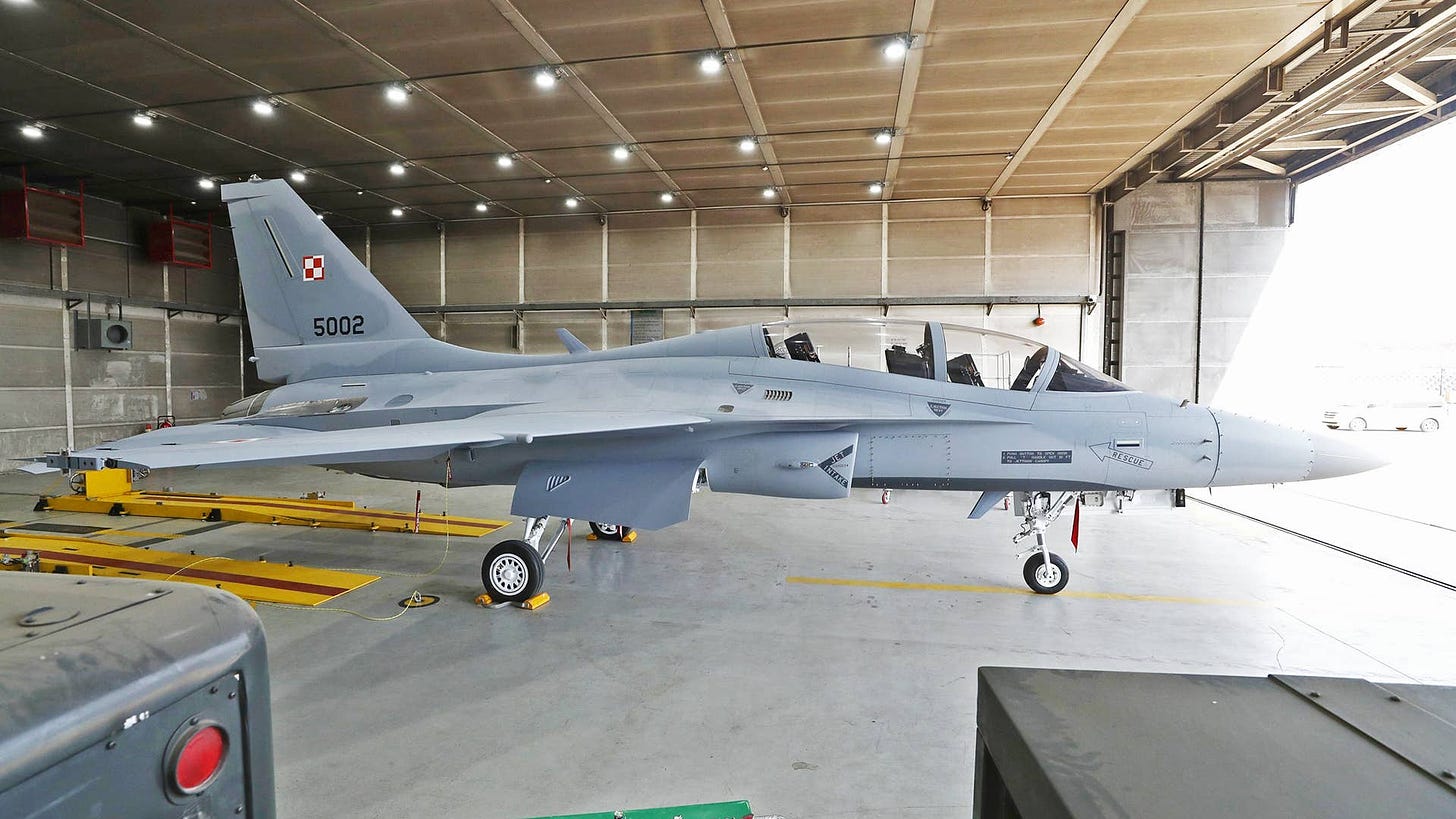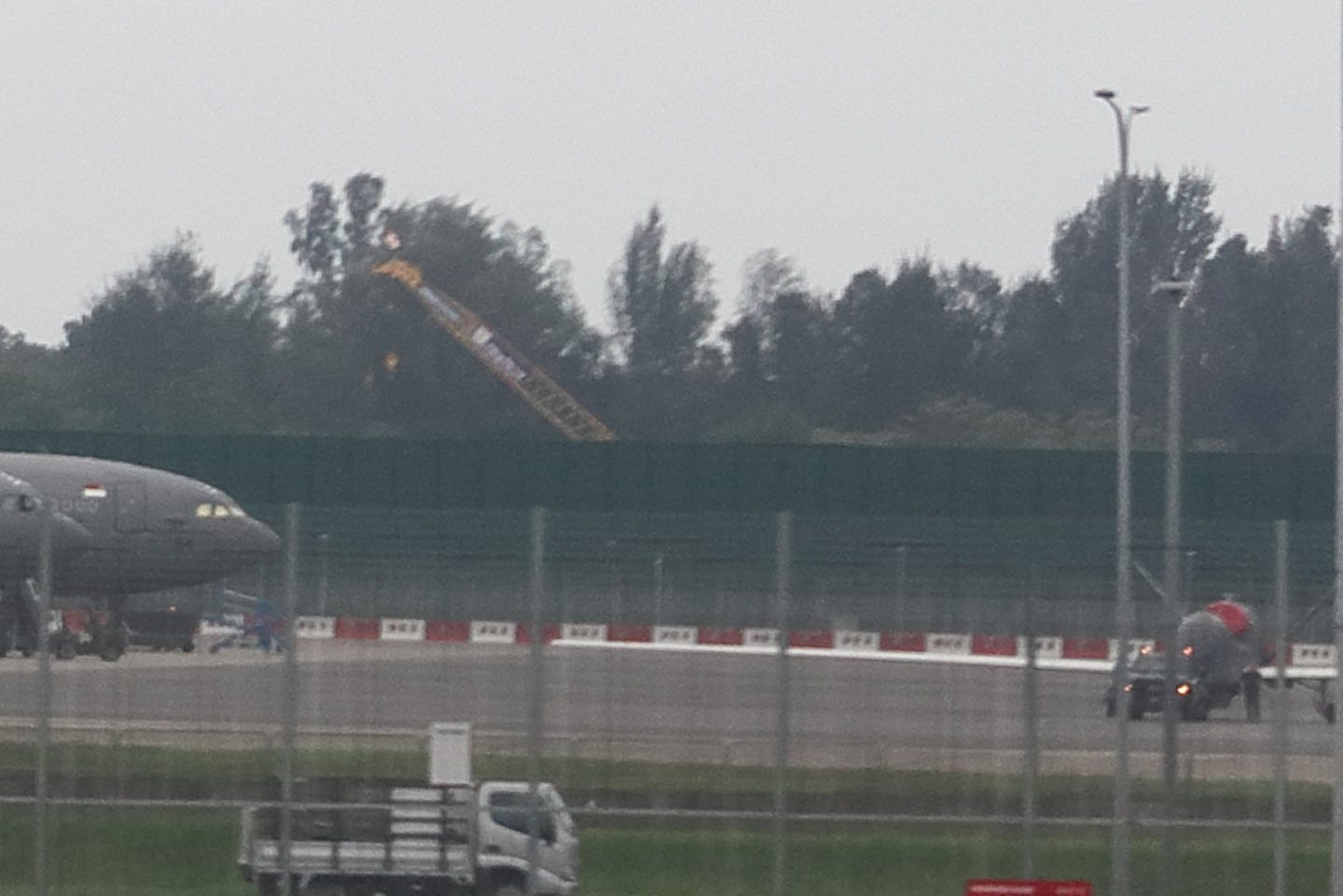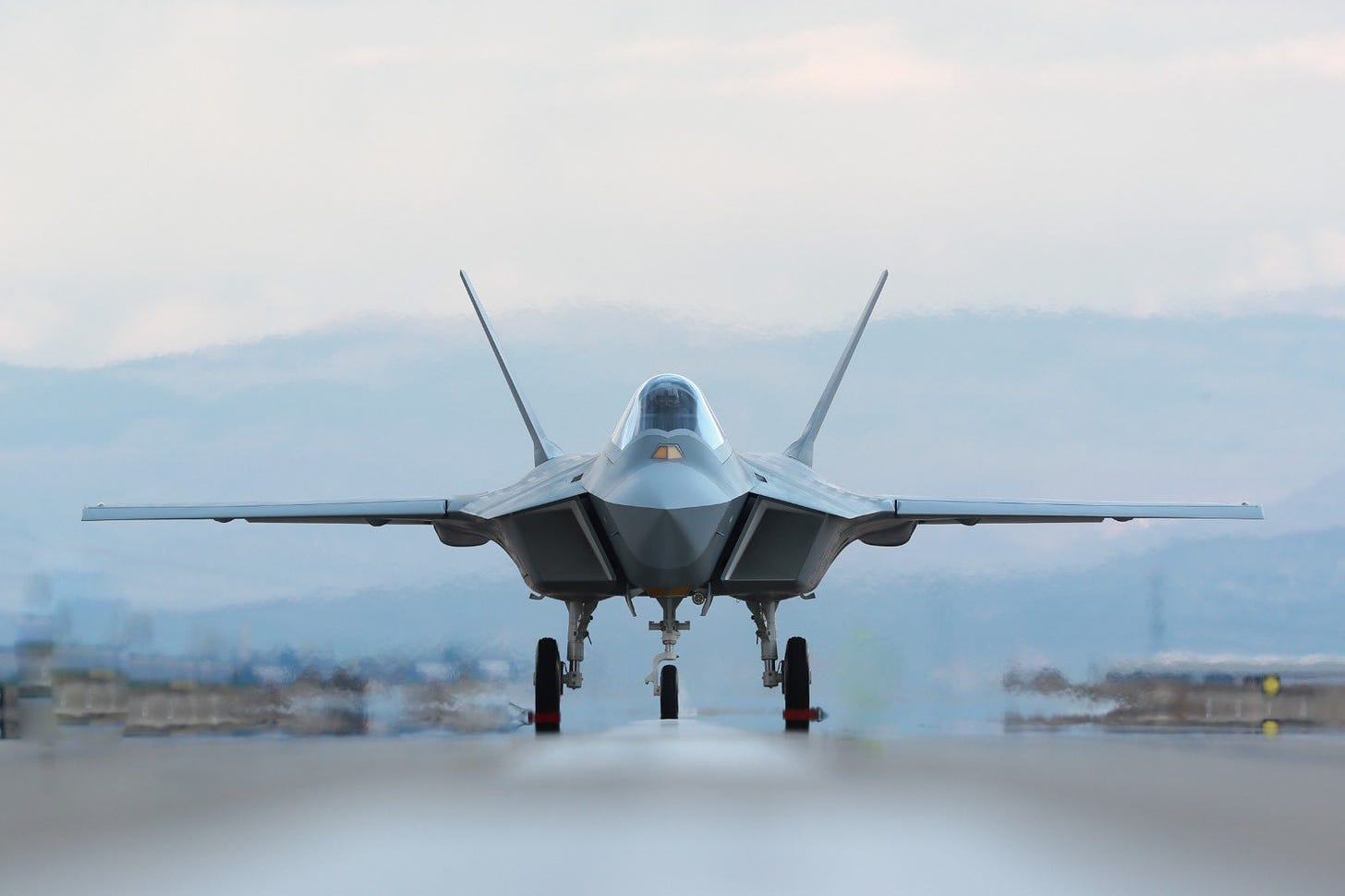Budget requests, drones and contracts: March in military aerospace
The third month of 2023 was filled with news about budget requests for the next fiscal year, drone news, and the signing of new contracts
The biggest story of this month was a Russian Su-27 fighter jet intercepting and damaging a U.S. Air Force MQ-9 Reaper, causing it to crash into the Black Sea. The incident happened in international airspace on the morning of March 14, 2023, and pushed the U.S. Air Force to reevaluate reconnaissance missions above the Black Sea. While the incident was not the first time Russian jets intercepted and attempted to down Ukrainian and U.S. drones over the Black Sea, the U.S. military decided to decrease the number of U.S. unmanned reconnaissance missions and directed the flightpaths further away from Crimea.
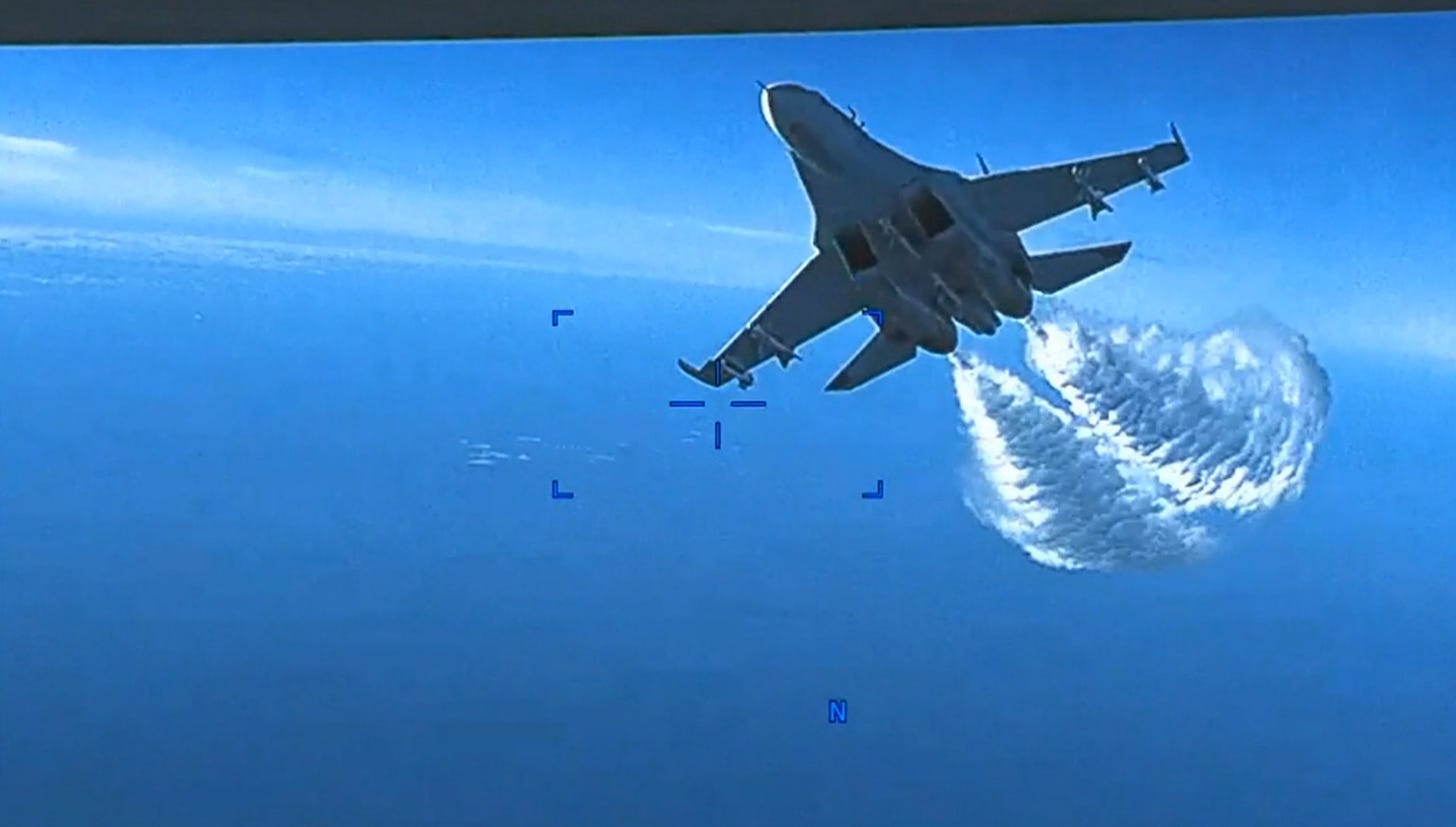
Other news stories
On the first day of the month, Japanese media reported that the U.S. Navy is planning to the Japan-based USS Ronald Reagan aircraft carrier by 2025. The sole forward-deployed aircraft carrier will be replaced by USS George Washinton, which is currently undergoing a midlife repair and modifications for the MQ-25A Stingray unmanned refuelling drone.
On March 1, Saudi Arabia’s Minister of Defense stated that he ‘‘signed a declaration of KSA’s intent to participate in the Future Combat Air System program (…).’’ However, a press release from the British MoD stated that Saudi Arabia is not joining the FCAS program, which aims to develop a next-generation fighter aircraft, and that the declaration is aimed to increase cooperation between the British and Saudi armed forces.
A day after the confusing statements, Raytheon Technologies announced the company received a $250 million contract for seven missile tracking satellites for the Proliferated Warfighter Space Architecture. The satellite constellation will consist of missile warning and tracking satellites, as well as communication satellites in low and medium Earth orbit.
On March 2, it was announced that L3Harris started converting the first two OA-1K armed overwatch aircraft for the U.S. Special Operations Command. Last year, SOCOM selected the AT-802U Sky Warden for its Armed Overwatch program. The first ‘government verification tests’ are planned for later this year and initial operational capability is scheduled for 2027.
That same day, the Royal Australian Air Force announced it will donate two new PAC-750XL aircraft to the Papua New Guinea Defence Force. The first transport aircraft will be delivered in April and the second ‘‘by September 2023.’’ The delivery of the two aircraft follows Australia helping to re-establish the airworthiness of the first PAC-750XL aircraft in 2021.
A day after the Australian announcement, the U.S. Defense Innovation Unit awarded a $65 million contract to develop a system capable of converting carbon dioxide into synthetic aviation fuel. The contract is part of a program that aims to create small, mobile fuel production systems that can be quickly deployed, reducing the dependence on local infrastructure and logistics during a crisis.
On March 5, a Long Range Hypersonic Weapon test out of Cape Canaveral was cancelled due to a battery failure during pre-launch checks. The weapon system is a medium-range surface-to-surface hypersonic weapon in development for the U.S. Army, with the U.S. Navy intending to procure a naval variant of the weapon system.
In the first few weeks of March, more and more photos began to surface of U.S. military aircraft without the traditional unit markings after the Air Mobility Command (AMC) decided to remove most of the markings and tail numbers from its refuelling and cargo aircraft. Only a U.S. flag on the tail and light grey roundels will be visible on the aircraft because of ‘‘concerns about the operational security (…).’’
On March 6, Boeing confirmed quality issues with, among other commercial aircraft, the KC-46 Pegasus aircraft production. The problems caused delays in the deliveries of new tanker aircraft, but Boeing has not changed its delivery plans for 2023.
That same day, the U.S. Air Force Special Operations Command awarded a contract for three new MQ-9B SkyGuardians. The three remotely piloted aircraft will be used to prove the MQ-9B’s ability to launch and control a number of smaller drones ‘‘from permissive to denied environments.’’ The concept is part of a larger initiative to have large drones, like the MQ-9 Reaper and MQ-9B, launching and controlling swarms of smaller and (semi-)autonomous unmanned aerial systems.
In the first week of March, the U.S. Air Force released new photos of the B-21 Raider stealth bomber. Two weeks later, the U.S. Air Force budget request included a $241 million budget request to modernize the new stealth bomber. This does not indicate any problems or shortcomings in the program but instead highlights the bomber’s receptivity to upgrades through its open system architecture.

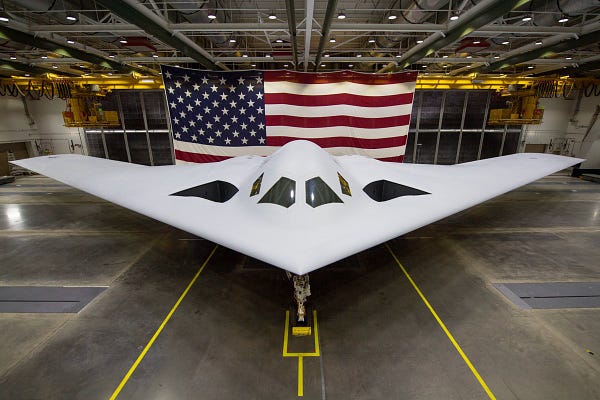
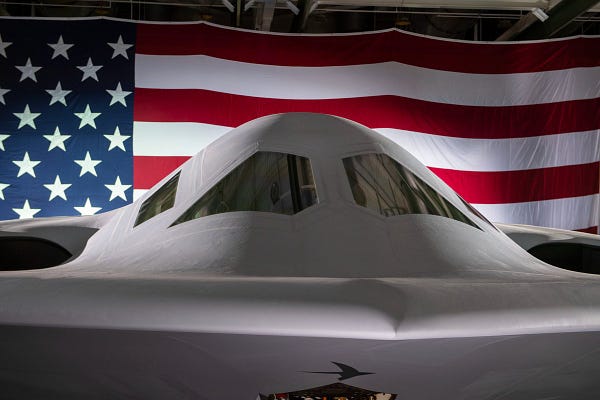
On the same day that the new photos were released, the US Air Force approved the MH-139 Grey Wolf helicopter for production and issued a contract for thirteen low-rate initial production helicopters. The MH-139 will replace the UH-1 helicopters currently in service for the security forces of the intercontinental ballistic missile installations and for VIP transport in Washington DC.
The U.S. Air Force is not the only service buying helicopters because the Nigerian Army ordered an additional twelve Cayuse Warrior Plus helicopters. The new order brings the total fleet to 36 light reconnaissance and attack helicopters that will be used to ‘‘assist with counter-insurgency and counter-terrorism operations.’’
On March 9, Iranian state media reported that Iran and Russia have agreed on the purchase of Su-35 Flanker-E fighter jets for the Iranian Air Force. The deal follows increased cooperation between the two countries during the war in Ukraine and the sighting of a Su-35 mockup at an Iranian air base, which was also mentioned in last month’s edition.
On March 11, Korea Aerospace Industries shared the first photos of Poland’s new FA-50 Fighting Eagle light fighter aircraft. The photos show that a ‘false canopy‘ is painted onto the underside of the fuselage, which is the first time such a feature, which aims to confuse enemy pilots during close-range combat, is seen on a Polish Air Force aircraft.
The U.S. Air Force budget request for Fiscal 2024, which was published on March 13, showed funding requests to buy an additional 24 F-15EX Eagle II fighter jets, bringing the total planned fleet to 104 aircraft, and funding to begin conformal fuel tank procurement for the new jets. In total, the budget request shows plans to acquire 95 new aircraft, while divesting 310 aircraft of various types. A great overview of the aircraft that the U.S. Air Force plans to acquire or divest can be found in this The War Zone article.
The U.S. Air Force Fiscal 2024 budget request also showed that the service intends to buy 48 Joint Strike Missile cruise missiles for the first time. A week before the budget request was published, General Atomics revealed a concept of an MQ-9B SkyGuardian with the cruise missiles. While the concept aimed to only ‘‘inspire a conversation about the possibilities for future use of the aircraft,’’ the concept and the procurement of the missiles highlight the shifting focus to (a maritime conflict in) the Pacific.
As part of this shifting focus, the U.S. Navy awarded contracts to Raytheon and Lockheed Martin to design and build competing prototypes for an air-launched, air-breathing hypersonic anti-ship cruise missile. The Hypersonic Air Launched Offensive Anti-Surface (HALO) weapon system will ‘‘allow the Navy to operate in and control contested battle space in littoral waters and anti-access/area denial (A2/AD) environments.’’
The U.S. Navy’s budget request, which was also published on March 13, included a $1.5 billion funding request for the development of the F/A-XX, which is the first unclassified budget request for the program that aims to develop a stealth sixth-generation crewed combat aircraft.
While the U.S. Air Force and the U.S. Navy are still waiting for the approval of the budget requests, the South Korean government approved plans to buy more F-35 jets and SM-6 interceptor missiles. Although the official documents do not disclose specific numbers, local media reported that the country will acquire approximately twenty F-35 jets in addition to the 40 already in service with the South Korean Air Force.
In mid-March, Defense News revealed that a U.S. Air Force RQ-4 Global Hawk deployed to Singapore since January. Although the RQ-4 visited Singapore for airshows before, this is the first known operational deployment to the country.
On March 13, the U.S. Air Force conducted the second All-Up-Round AGM-183A ARRW hypersonic missile test. While the initial statements were unclear, officials later confirmed that the test failed. As a result, the service is now planning to focus on the Hypersonic Attack Cruise Missile program instead and end the AGM-183 Air-launched Rapid Response Weapon (ARRW) hypersonic weapon program.
In the same week as the failed hypersonic test, the U.S. Air Force awarded a contract to Varda, a company developing spacecraft for microgravity production, to use their re-entry vehicles as hypersonic testbeds. During reentry, the capsule reenters the atmosphere at Mach 25 and will land at the Utah Test and Training Range. The first ‘factory satellite’ will launch later this year, but this first mission won’t include an Air Force test payload.
That same week, officials confirmed that the U.S. Navy’s new aircraft carrier is operating with all of its available airpower for the first time. USS Gerald R. Ford is underway for a composite training unit exercise to ‘‘assesses a carrier strike group's abilities to conduct military operations at sea and project power ashore through joint planning and execution of challenging and realistic training scenarios.’’
On March 14, Norway announced that the cancelled NH90 helicopters will be replaced by the MH-60 Seahawk. The helicopters will initially be used by the Coast Guard but will receive equipment for anti-submarine operations for the Norwegian Navy as well. Following training with Danish helicopters, the first Norwegian helicopters are scheduled to arrive in 2025.
A day later on March 15, General Electric confirmed manufacturing challenges with the GE T901 engine that will replace the T700 engine on UH-60 Black Hawks and AH-64 Apaches. The new engine will also be used by Sikorsky and Bell’s respective FARA prototypes, delaying the first test flights of the new attack helicopters to late 2024.
The day after the confirmed delays, the government of Mali showcased the arrival of four LC-39C Albatros light combat aircraft from Russian stocks and three new Bayraktar TB2 drones to the Malian Air Force.
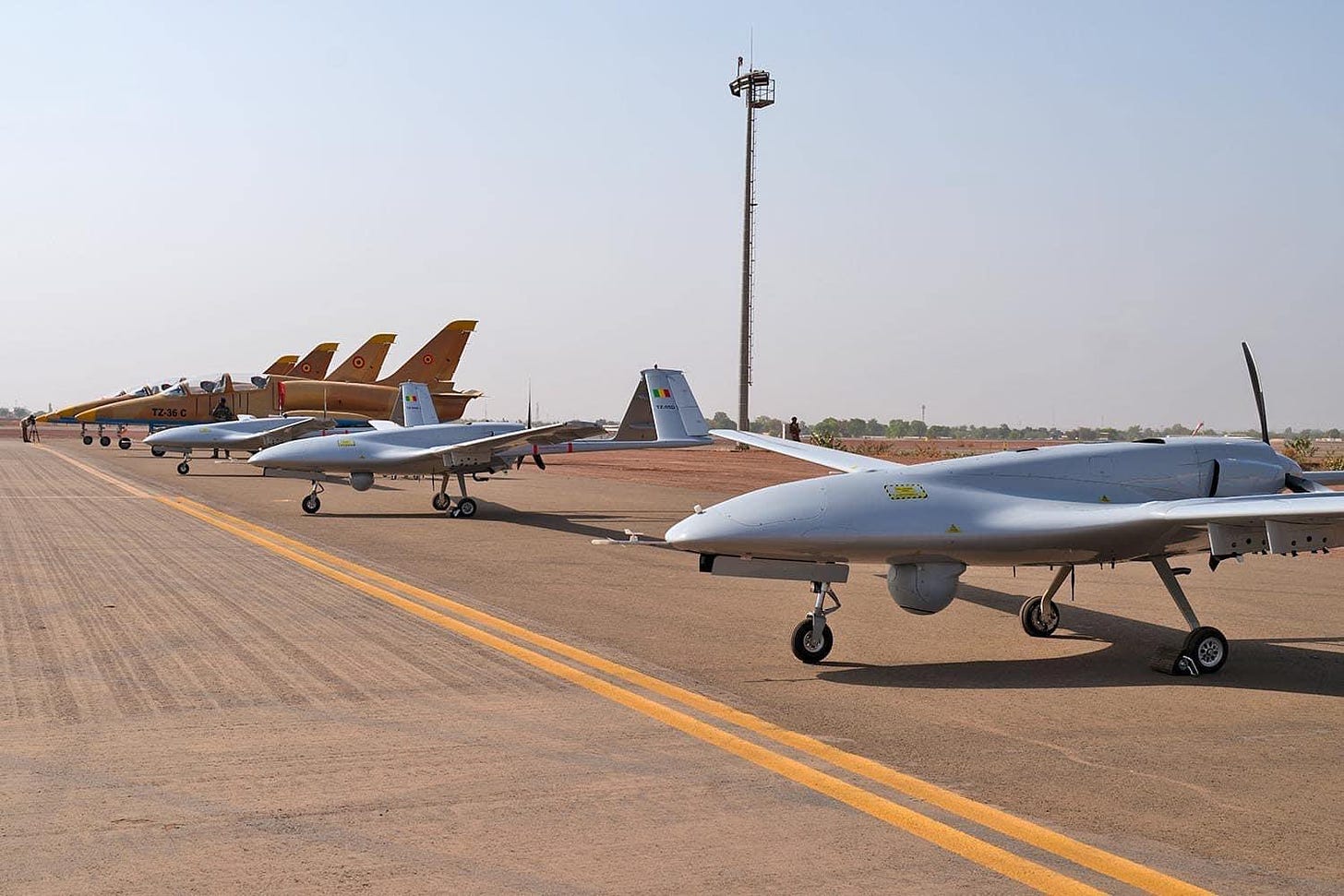
On March 16, an Iranian-made Mohajer-6 drone crashed in eastern Afghanistan. The drone was flying with a serial number (ER-878) that was previously seen on exported drones, suggesting that the drone was not operated by the Iranian military. However, no one has acknowledged losing the drone and details remain limited.
March 16 was the day of drone news because the U.S. Navy announced the end of a 3-year-long deployment of two MQ-4C Triton unmanned aircraft to Guam and Japan. The aircraft will return later this year to start the MQ-4C’s initial operational capability, utilizing multiple Triton aircraft in the upgraded IFC-4 configuration with an upgraded sensor suite.
The drone news did not end on March 16 as Turkish media reported that Angola will buy Turkish TAI Aksungur drones. The country will be the first African nation to buy the drones, but it is unknown how many will be delivered to Angola.
On the same day of all the drone news, the Italian Air Force signed a contract to begin upgrading their C-27J Spartan fleet. The twelve transport aircraft will receive upgrades to the avionics suite, general systems, self-protection systems, and to the C-27J simulators.
In the second half of March, the Israeli Air Force participated in the large-scale Red Flag exercises out of Nellis Air Force Base, Nevada, for the first time. Seven Israeli F-35I ‘Adir‘ jets and Boeing 707 tanker aircraft participated in a wide range of training exercises, including air interdiction, suppression of enemy air defence, and long-range strike missions. Israel’s participation comes after the large Juniper Oak exercise in January, acquisition plans of the KC-46 Pegasus tanker, and increasing tensions with Iran.
Later that week, Turkish Aerospace Industries unveiled its Anka-3 Unmanned Combat Air Vehicle (UCAV). The low-observable flying wing UCAV is designed as a survivable strike, surveillance, and electronic warfare program that will work in conjunction with Turkey’s manned TF-X stealth jet, which completed a series of taxi tests in March.
On March 17, Boeing announced that the company will build 184 AH-64E Apache helicopters for the U.S. Army and international customers. The $1.9 billion award includes 130 helicopters for the U.S. Army and 54 Apaches for partner nations, including the first Apache helicopters for Australia.
Later that week, Field Aerospace announced that the company has completed the avionics refresh for 73 U.S. Air Force T-1A Jayhawk multi-engine trainer aircraft. It was likely the last major upgrade program for the aircraft because all T-1As are being retired over the next three years as the U.S. Air Force moves to a simulator-only program. The jets are used for training pilots bound to fly transport aircraft.
On March 20, photos showed an Il-96 transport aircraft in the livery of AirBridgeCargo. While this newsletter focuses on military aviation, it is worth mentioning since it is likely the result of the (sanctions in response to) Russia’s war in Ukraine. The airline operated fifteen Boeing 747 aircraft and a Boeing 777, but these U.S.-made aircraft have not flown since March 2022.
On March 23, Air Force officials from Denmark, Finland, Sweden and Norway signed an agreement on cooperation with the goal to be able to ‘‘operate together as one force.’’ To achieve this, the Nordic Air Forces will integrate command and control and operational planning, conduct joint airspace surveillance as well as joint education training and exercises.
Although unrelated to the signing of the cooperation agreement, a U.S. Air Force RC-135W Rivet Joint conducted a reconnaissance mission above Finland for the first time on March 23. A statement from the Finnish Ministry of Defense stated that "there have been no changes in Finland's military security situation or environment in the recent past" and that ‘‘similar flights in Finnish airspace will be carried out in the future as well with different types of aircraft, both unmanned and manned.’’
On that same day, NATO’s Multinational MRTT Unit achieved initial operational capability and is ‘‘now ready for a full range of missions.’’ At the ceremony, it was also announced that a tenth aircraft will be added to the fleet of A330 Multi-Role Tanker Transport (MRTT) aircraft. Currently, the unit operates seven aircraft with two more expected to join in 2024 and a tenth scheduled for delivery in 2026.
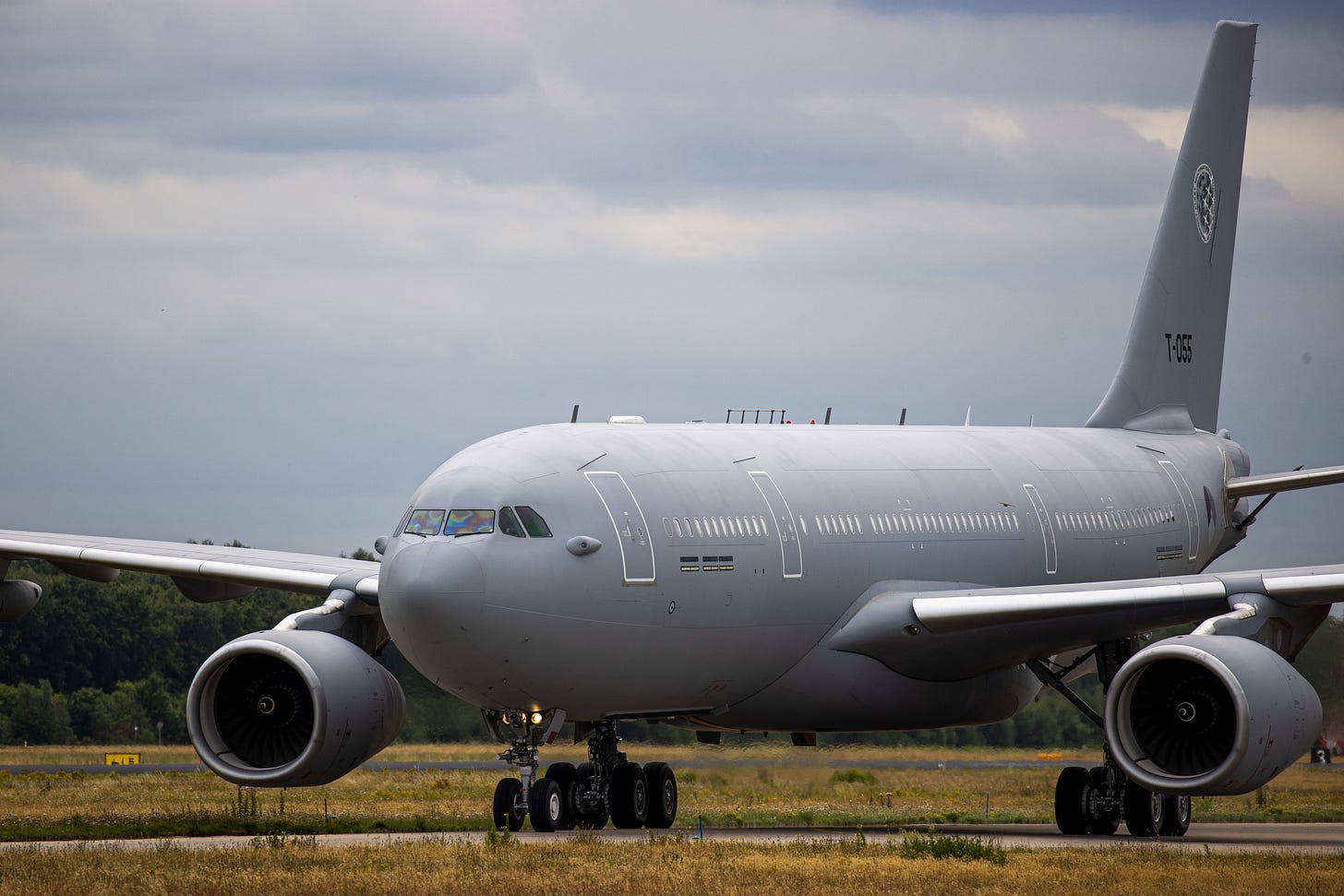
Later that week, an Iranian UAV killed an American contractor and wounded five U.S. service members in an attack on a coalition base in Syria. In response, U.S. Air Force F-15E Strike Eagles struck targets in Syria, which was followed by Iranian-backed militias firing missiles at a U.S. base in Syria. While tensions have lowered since the attacks, the deployment of the George H.W. Bush carrier strike group was extended ‘‘to potentially bolster the capabilities of CENTCOM to respond to a range of contingencies in the Middle East.’’
On March 24, photos revealed that the Chinese Navy’s South China Sea Fleet Air Force has received the WZ-7H Soaring Dragon. The high-altitude long-endurance UAV is painted in a new light grey colour scheme, which differentiates the aircraft from the ones in service by China’s Air Force.
March 24 was also the end of a month-long Bomber Task Force mission for four U.S. Air Force B-52H Stratofortress bombers. As part of the deployment to Morón Air Base, Spain, the bombers flew missions above northern Europe, the Baltic States, eastern Europe, the Middle East, and a mission over Ghana and other African nations.
On that same day, the U.S. Army awarded MAG Aerospace a $532 million contract to build contractor-operated intelligence, surveillance and reconnaissance (ISR) jets as part of the ATHENA-R program. Similar to the ARTEMIS jets, the program aims to field ISR jets that can gather intelligence from a safe standoff distance.
Two days later on March 26, a Chinese official stated that the WS-15 engine entered serial production. The engine is expected to fully replace the WS-10C engines currently used on China’s J-20 stealth fighter jet. The new WS-15 engine will be more powerful and is designed to improve the manoeuvrability of the J-20 jets.
On March 28, Airbus announced that their A310 MRTT testbed aircraft successfully demonstrated its ability to autonomously control several drones while in flight. The test with DT-25 targeting drones laid the groundwork for future plans to autonomously refuel (uncrewed) aircraft with Airbus MRTT aircraft. A ‘‘end-to-end demonstration’’ of an MRTT autonomously refuelling a DT-25 drone in flight is scheduled for mid-2024.
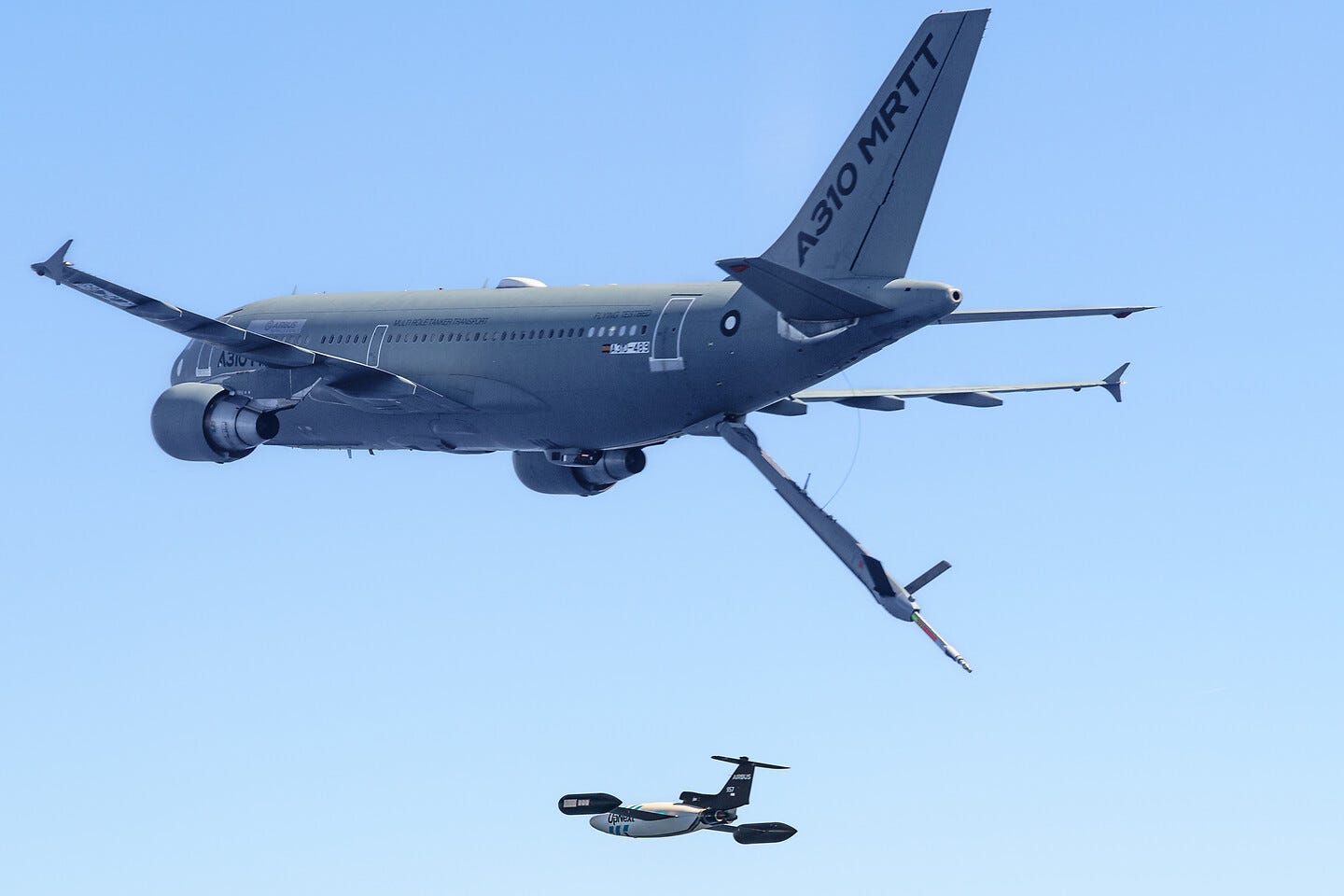
While Airbus is testing autonomous operations with its tanker aircraft, the U.S. Air Force’s budget request showed that the service is (finally) planning to add fuel-saving winglets to a portion of its KC-135 Stratotanker fleet. After initial flight tests, an unspecified number of KC-135s are set to receive winglets between the Fiscal Years 2025 and 2028.
That same week, it was revealed that the U.S. Air Force will outfit six F-16s with autonomous flight systems as part of the Viper Experimentation and Next-Gen Operations Mode (VENOM) program. The F-16s, which will be able to fly without a pilot, will continue autonomous testing and assess how the U.S. Air Force can best bridge autonomous and crewed formations for the Combat Collaborative Aircraft program.
This month also saw two different news stories about AH-1 helicopters being sold for reduced prices. On March 22, Slovakia was offered a deal to acquire twelve AH-1Z Viper attack helicopters and 500 AGM-114 Hellfire missiles as compensation for the MiG-29 jets donated to Ukraine. If the deal is accepted, Slovakia would pay $340 million for the equipment and training in a deal worth more than $1 billion. On March 29, Bahrain was cleared to buy twenty-four refurbished AH-1W SuperCobra multi-role helicopters. As part of the deal, Bahrain is only charged for the costs of getting the helicopters back into airworthy condition, upgrades and shipping.
On the last day of the month, Boeing announced that the company received a $184 million contract for a Block 1 upgrade of the KC-46A communications suite. The upgrades include ‘‘line-of-sight and beyond-line-of-sight communications technologies with antijamming and encryption features’’ and will improve the command and control capabilities of the multi-role tanker aircraft.
Orbital launch statistics
March saw a total of 22 successful orbital launches, including one crewed launch and four (confirmed, possibly more) military satellites. A worthy mention is the Shavit-2 launch from Israel that deployed the Ofeq-13 reconnaissance satellite into orbit. Orbital launches from Israel are already rare and the satellites are launched into an exotic retrograde orbit (opposite direction of Earth’s rotation) to prevent launching over the nations to Israel’s east.
United States: 10 launches; 269 satellites
China: 7 launches; 9 satellites
Russia: 3 launches; 3 satellites
India: 1 launch; 36 satellites
Israel: 1 launch; 1 satellite
Total: 22 launches; 318 satellites
Thank you
Thank you for reading the third edition of the monthly newsletter about military aviation and spaceflight! Always feel free to @ or DM me on Twitter to notify me about news stories. Subscribe to get the next edition directly in your inbox and feel free to reach out with your thoughts, questions and/or suggestions.



